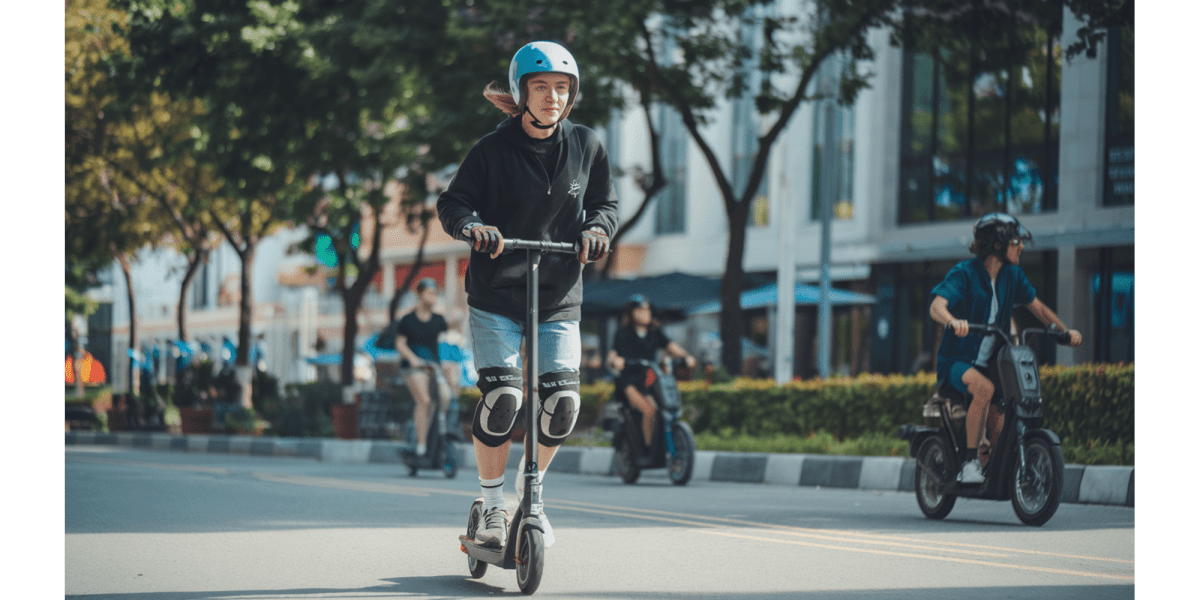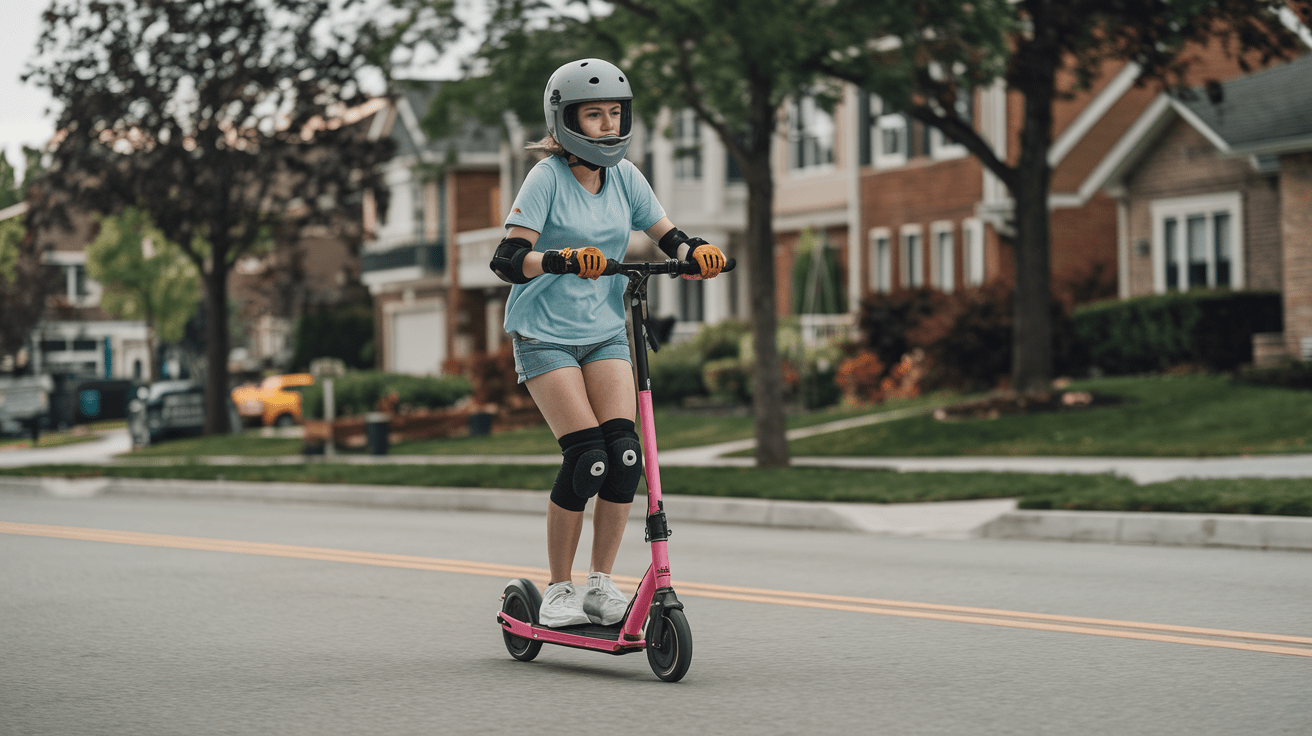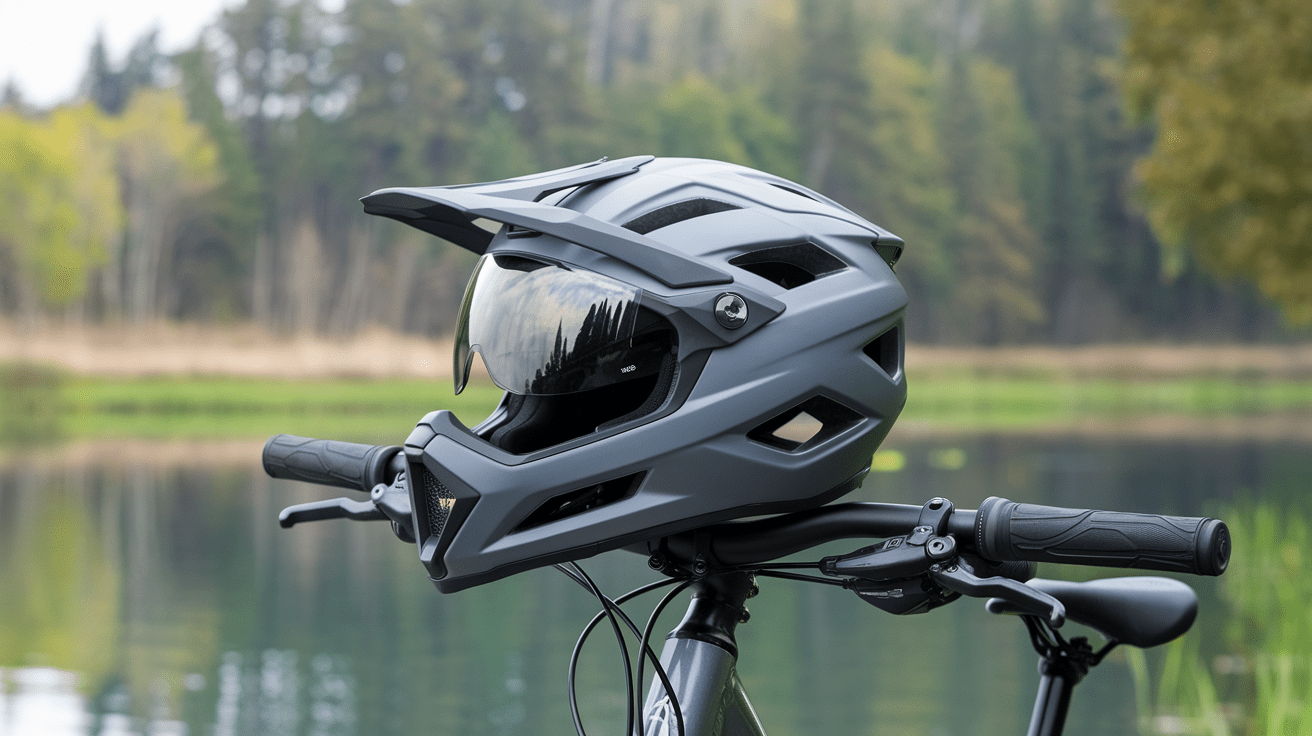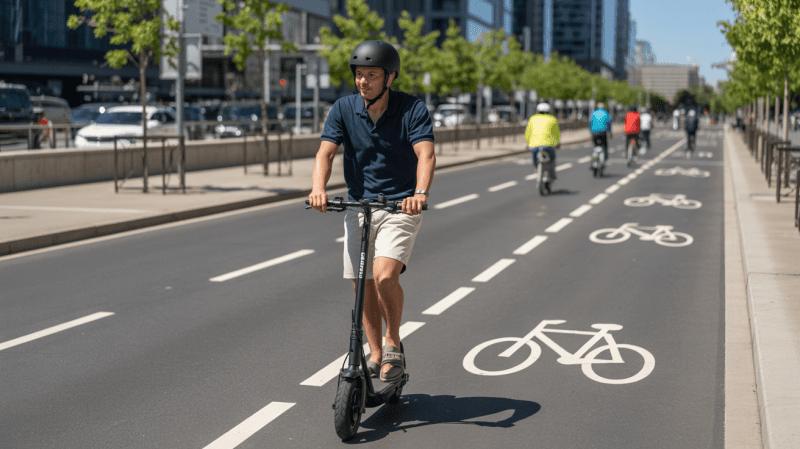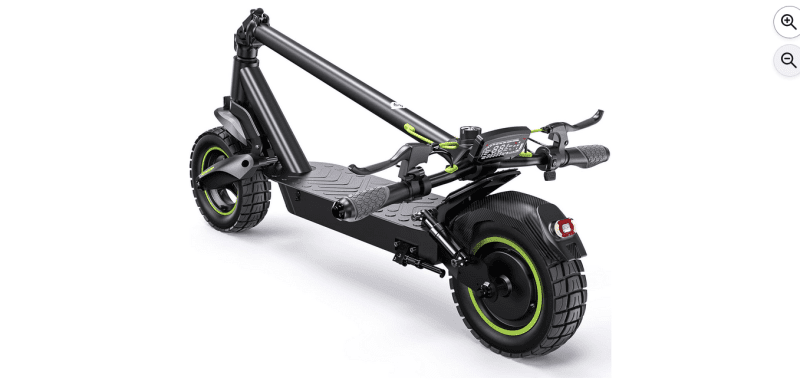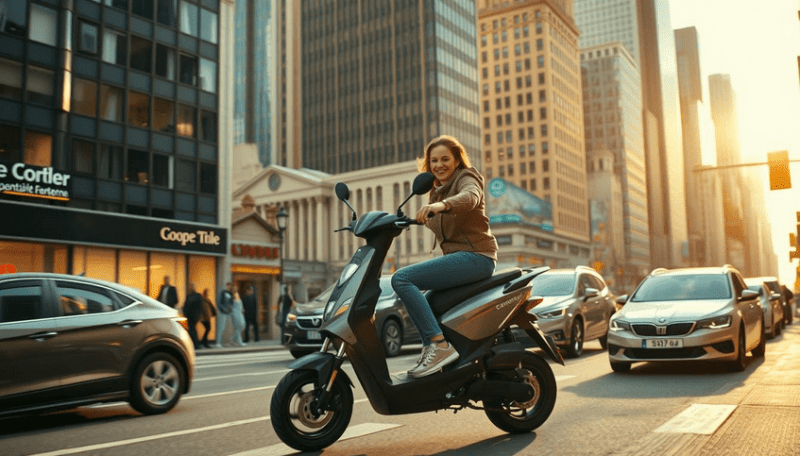Are electric scooters too slow to satisfy your need for speed? With a top speed of 20 mph, some riders may find themselves yearning for something quicker and more thrilling. But is 20 mph fast enough for an electric scooter? In this article, we will dive into the world of electric scooters and explore whether their current speed capabilities are sufficient for riders.
While 20 mph might not sound impressive when compared to motorcycles or sports cars, it is important to consider the context in which electric scooters are used. Designed primarily for commuting and short urban trips, electric scooters offer a convenient and eco-friendly alternative to traditional transportation methods. However, their modest speed may raise questions about their suitability for longer journeys or use in areas with faster-moving traffic.
Join us as we examine the advantages and limitations of electric scooters and discuss whether 20 mph is indeed fast enough for riders. Whether you are a fan of electric scooters or questioning their capabilities, this article will provide valuable insights into the need for speed in electric scooters.
The rise of electric scooters in urban transportation
In recent years, electric scooters have surged in popularity, transforming urban transportation landscapes around the globe. As cities grapple with congestion and pollution, these agile vehicles offer a practical solution for short-distance travel. The convenience of electric scooters lies in their ability to navigate through crowded streets where cars might struggle, providing an efficient means of mobility for commuters and leisure riders alike. The advent of shared electric scooter services has further fueled this trend, allowing users to unlock a scooter with their smartphones and ride to their destination without the hassle of ownership.
The rise of electric scooters can be attributed to a growing awareness of environmental issues. As urban populations swell, the need for sustainable transportation options has become more pressing. Electric scooters produce zero emissions at the point of use, making them an eco-friendly choice compared to gas-powered vehicles. Cities increasingly recognize the importance of reducing their carbon footprints, and integrating electric scooters into public transport systems is a step in the right direction. Moreover, the ease of use and low operational costs make them a viable alternative for many riders, contributing to their rapid adoption.
However, the rise of electric scooters has not come without challenges. Safety, regulation, and infrastructure issues must be addressed to ensure that these vehicles can coexist with pedestrians and traditional motor vehicles. Cities are now tasked with creating policies that accommodate this new mode of transport while ensuring public safety. As more riders take to the streets on electric scooters, the conversation around their impact on urban mobility will continue to evolve, highlighting the need for careful consideration of how they fit into the larger transportation ecosystem.
Understanding the concept of "fast enough" for electric scooters
The phrase "fast enough" can vary significantly among different riders, influenced by factors such as personal preferences, terrain type, and the scooter's intended use. When we consider electric scooters, the standard top speed often hovers around 20 mph, which may seem modest compared to other vehicles. However, it is essential to recognize that electric scooters are primarily designed for short-distance travel and urban commuting. Thus, the definition of "fast enough" should be evaluated within the context of these intended uses.
For many riders, 20 mph is considered adequate for city commuting. It allows for swift travel while enabling riders to control their scooters. The speed also ensures that riders can safely navigate through traffic, avoiding the dangers of higher speeds. In addition, at 20 mph, riders can maintain a pace that aligns with the flow of urban traffic without risking becoming a hazard to themselves or others. This speed is particularly beneficial in densely populated areas where stopping and starting are frequent, and sudden acceleration is rarely needed.
On the other hand, some riders, particularly thrill-seekers and those commuting longer distances, may find 20 mph insufficient. They might yearn for greater speed to cover more ground quickly or to enhance their riding experience. The subjective nature of speed perception means that while one rider may feel satisfied at 20 mph, another may feel restricted. Thus, understanding what constitutes "fast enough" for electric scooters requires a nuanced look at rider demographics, urban environments, and personal expectations.
Factors to consider when determining the ideal speed for an electric scooter
Various factors include rider safety, local regulations, and the scooter's design specifications when evaluating the ideal speed for an electric scooter. Safety is paramount; higher speeds can lead to more severe accidents, particularly in urban settings filled with pedestrians, cyclists, and motor vehicles. Riders must feel confident in controlling their scooter, especially when navigating tight spaces or avoiding obstacles. Therefore, the ideal speed must balance providing enough thrill and ensuring rider safety.
Local regulations significantly influence the acceptable speeds for electric scooters. Many cities have established speed limits to ensure electric scooters do not harm pedestrians and other road users. These regulations often cap speeds at 15-20 mph, aligning with the average speed limits for bicycles and similar vehicles. Riders must be aware of and comply with these regulations, as failing to do so can result in fines or accidents. Moreover, municipalities may adjust speed limits based on specific areas, such as residential neighborhoods or busy commercial districts, further complicating the ideal speed scenario.
Another essential factor is the scooter's intended purpose. For commuters looking for a reliable means of transport to work or school, a speed of 20 mph may be ideal, allowing for efficient travel without excessive risk. However, for recreational riders seeking an exhilarating experience, higher speeds may be necessary to meet their desires. Factors such as battery life and range also play a role; scooters designed for higher speeds may have shorter ranges due to increased power consumption. Ultimately, the ideal speed for an electric scooter will depend on safety, regulatory compliance, and rider preferences.
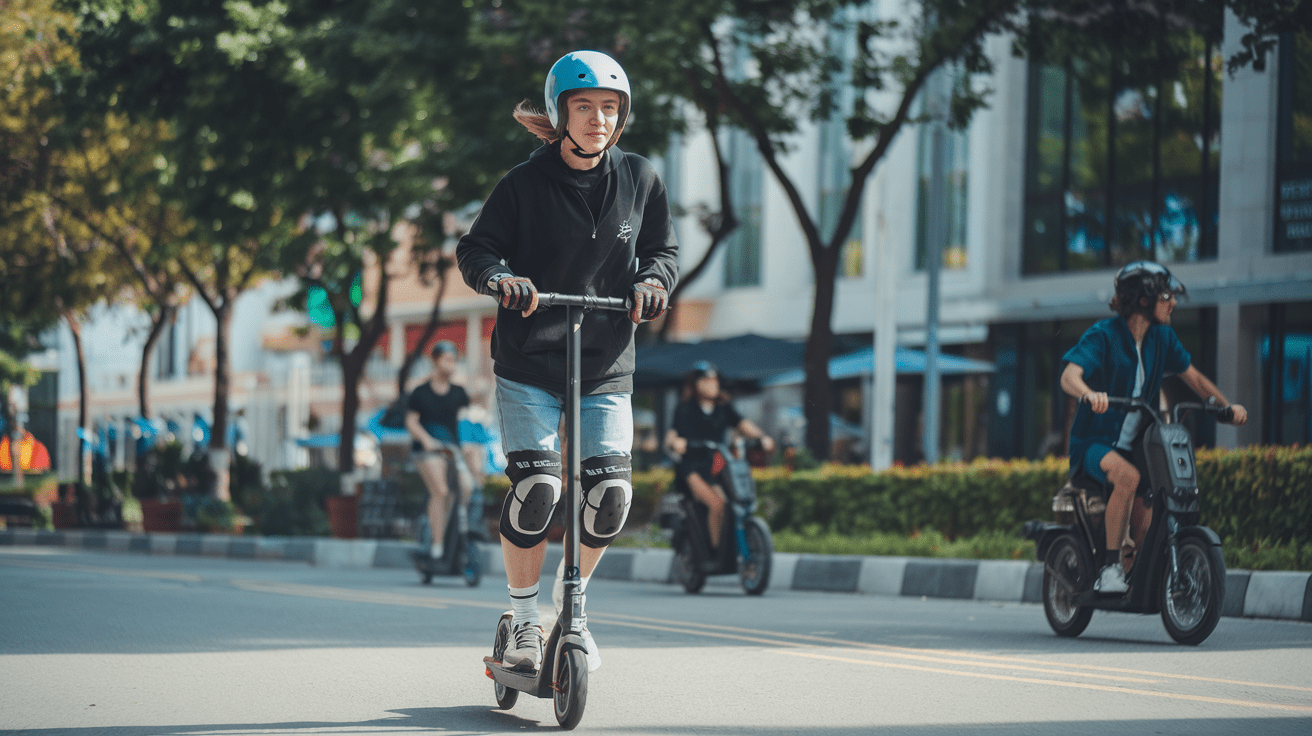
Safety concerns and regulations surrounding high-speed electric scooters
As electric scooters become more prevalent in urban environments, safety concerns have emerged, particularly regarding high-speed models. The potential for accidents increases with speed, especially in congested streets where pedestrians and cyclists are present. Riders must have the skills to maneuver their scooters safely, and cities must provide adequate infrastructure, such as bike lanes and dedicated paths, to minimize risks. Unfortunately, the lack of such infrastructure in many areas can lead to dangerous situations for riders, prompting calls for stricter regulations.
Regulations surrounding electric scooters vary widely from one location to another. Some cities have implemented strict speed limits, often capping speeds at 15 or 20 mph to mitigate risks. These regulations aim to create a safer environment for all road users but also limit the potential for those seeking faster rides. Additionally, age restrictions and licensing requirements may be enforced in certain areas to ensure riders know about safe operation practices. Such regulations are essential for fostering responsible riding behavior and reducing accidents.
Moreover, there is an ongoing debate about the need for safety gear. While some riders may wear helmets and protective pads, others may choose not to. Regulations that mandate safety equipment, such as helmets, could play a crucial role in reducing injuries. Various studies indicate that wearing a helmet significantly decreases the likelihood of head injuries during accidents. Therefore, advocating for safety gear regulations could improve overall safer riding experiences. Striking a balance between speed, safety, and enjoyment is vital as the electric scooter market expands.
The benefits of a 20 mph electric scooter
Despite the ongoing discussions about speed, there are several notable benefits to owning a 20 mph electric scooter. One significant advantage is the balance it strikes between efficiency and safety. At this speed, riders can enjoy a swift ride while maintaining control, which is particularly important in urban environments. Traveling at 20 mph makes it easier to keep pace with traffic, allowing riders to reach their destinations quickly without feeling overwhelmed by the pressures of faster vehicles.
Another benefit lies in the accessibility of 20 mph electric scooters. This speed is manageable for a wide range of riders, including those who may be less experienced or younger. Electric scooters can cater to a broader demographic by keeping speeds within this range, encouraging more individuals to consider using them as a viable transportation option. This accessibility can promote a shift towards more sustainable modes of transport, as more people feel comfortable and encouraged to ride electric scooters for their daily commutes or leisurely outings.
Additionally, the operational costs of electric scooters are often quite low, especially when considering the savings on fuel and maintenance that come with traditional vehicles. Riders can enjoy the benefits of a quick mode of transport without the financial burden associated with higher-speed vehicles, such as motorcycles or cars. The efficiency of electric scooters at 20 mph also means they can conserve battery life over longer distances, allowing for extended rides without frequent recharging. This combination of safety, accessibility, and cost-effectiveness makes 20 mph electric scooters a compelling choice for many urban commuters.
Exploring higher speed options for electric scooters
While 20 mph electric scooters offer a range of benefits, the demand for higher-speed options continues to grow. Many riders are seeking electric scooters that can achieve speeds greater than the standard limit, driven by the desire for quicker commutes and a more exhilarating riding experience. As a result, manufacturers are developing models capable of reaching speeds of 25 mph or even higher. These scooters are often equipped with more powerful motors and enhanced battery systems to accommodate the increased energy requirements.
However, pursuing higher speeds raises important questions about safety and regulations. Electric scooters exceeding 20 mph may pose additional risks to riders and pedestrians. Riders must possess greater control and awareness of their surroundings, as the potential for injury increases with speed. Consequently, many cities hesitate to allow such scooters on public roads without stringent regulations. As manufacturers push the boundaries of speed capabilities, the conversation around safety and responsible riding practices becomes even more critical.
Moreover, higher-speed electric scooters may require specialized features to enhance rider safety. Advanced braking systems, improved suspension, and enhanced tires are crucial for maintaining stability and control at greater velocities. Safety gear, such as helmets and protective clothing, becomes increasingly important for riders of high-speed scooters. As the market for these vehicles expands, manufacturers and regulators must collaborate on creating standards that promote performance and safety, ensuring that riders can enjoy the thrill of speed without compromising their well-being.
Comparing the top electric scooter models and their speed capabilities
As the electric scooter market grows, numerous models are emerging, each with varying speed capabilities and features. Some of the top electric scooters on the market can reach impressive speeds, but they differ widely in design, battery life, and price. For instance, scooters like the Dualtron Thunder and the Kaabo Wolf Warrior are known for their high-speed performance, often exceeding 30 mph. These scooters are aimed at enthusiasts looking for power, speed, and advanced features, making them suitable for urban commuting and off-road adventures.
However, it's important to consider that higher-speed scooters often have a steeper price tag. While models capable of reaching 25 mph or more can provide an exhilarating ride, they may also require a larger upfront cost and maintenance investment. Furthermore, riders must weigh the benefits of additional speed against the potential for increased risks. In contrast, more affordable models at 20 mph may provide a more practical solution for everyday commuting, particularly for those who prioritize safety and ease of use.
When comparing speed capabilities, riders should also consider range, weight, and portability. A scooter that can achieve high speeds may not be as convenient for daily use if it lacks sufficient range to cover a typical commute or if it is too heavy to carry. Evaluating the complete package—speed, battery life, weight, and price—will help riders make informed decisions that align with their needs and preferences. Ultimately, the choice of an electric scooter will depend on the rider's lifestyle, intended use, and willingness to invest in a specific model.
The future of electric scooters and advancements in speed technology
Looking ahead, the future of electric scooters appears promising, with continuous advancements in technology paving the way for improved speed and performance. As battery technology evolves, manufacturers are developing lighter, more efficient batteries that can support higher speeds without sacrificing range. Innovations such as solid-state batteries and fast-charging capabilities are on the horizon, which could revolutionize how electric scooters operate and enhance their overall performance.
Moreover, the integration of smart technology into electric scooters is set to become a game-changer. Features like GPS tracking, anti-theft systems, and smartphone connectivity are increasingly common, providing riders with added security and convenience. These technologies will enhance the user experience and allow for better monitoring of scooter performance, helping riders optimize their speed and efficiency. As smart technologies become more prevalent, the potential for electric scooters to adapt to individual rider preferences will expand, offering tailored experiences for both casual and speed-seeking users.
As cities adapt to the growing presence of electric scooters, regulations will also evolve. Policymakers must strike a balance between accommodating higher-speed models and ensuring public safety. The development of dedicated lanes and improved infrastructure will play a crucial role in supporting the future of electric scooters. As more riders embrace this mode of transport, a collaborative approach between manufacturers, riders, and city planners will be essential for creating a safe and efficient environment for all.
Conclusion: Finding the right balance between speed and safety in electric scooters
Whether 20 mph is fast enough for an electric scooter is multifaceted. While this speed offers numerous advantages, including safety, accessibility, and cost-effectiveness, the desire for higher speeds continues to shape the market. Riders must navigate a landscape that balances the thrill of speed with the necessity of safety, particularly in urban settings where traffic and pedestrians are prevalent.
As electric scooters evolve, the focus on speed will likely intensify, prompting manufacturers to develop models that cater to varying rider preferences. However, with increased speed comes greater responsibility. Riders must prioritize safety by wearing protective gear and adhering to local regulations. Meanwhile, cities must adapt to accommodate this growing mode of transport, ensuring that infrastructure and policies promote safe riding practices.
Ultimately, the future of electric scooters will be defined by a collective effort to find harmony between speed and safety. As advancements in technology and infrastructure continue to emerge, the electric scooter landscape will undoubtedly evolve, providing thrilling yet responsible riding experiences for all. Whether you are a commuter looking for a reliable mode of transport or an enthusiast seeking the excitement of higher speeds, the journey ahead looks bright as we explore the exhilarating world of electric scooters.
Ride Safe!
DISCLAIMER
This document is provided for general information purposes only. It should not be relied upon as providing legal advice, technical, or specific operational guidance to the reader, whether as to the practices described in the document or the applicable legal requirements and regulations. Just Electric Scooters. Com expressly disclaims any responsibility for liability arising from or related to the use or misuse of any information in this document.
